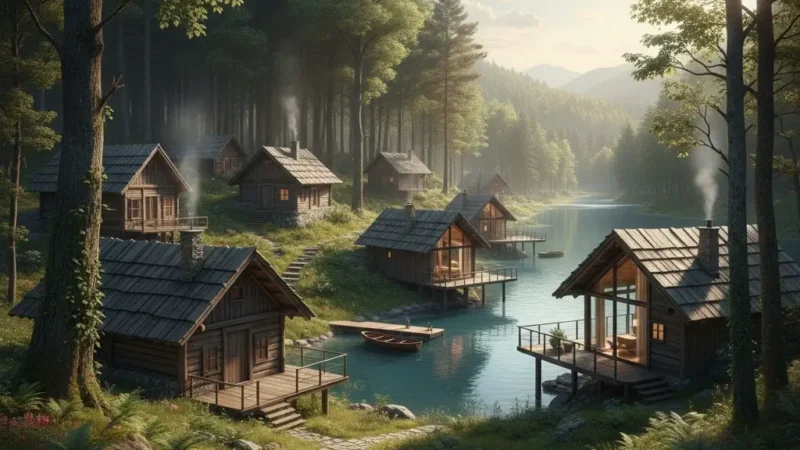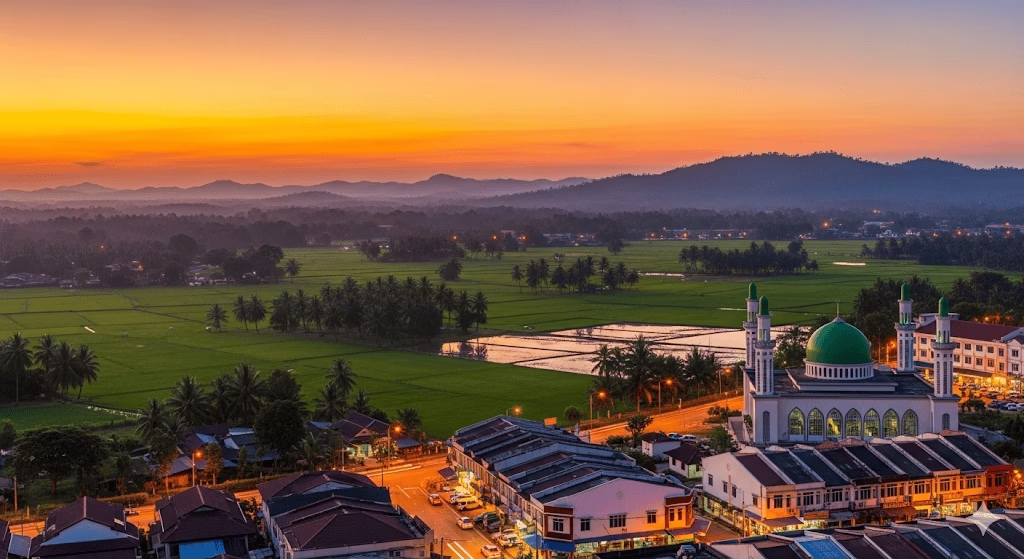Inland Nature Escapes – Forest Cabins and Lakeside Chalets with High Demand but Low Coverage

Introduction
Inland nature escapes — from minimalist forest cabins to private lakeside chalets — have become one of the fastest-growing travel trends of the decade. As travellers shift from crowded tourist hubs to serene, secluded stays, demand is skyrocketing while supply remains limited. This gap creates both a traveller challenge and a major development opportunity.
Why Inland Nature Escapes Are Booming
A Global Shift Toward Stillness and Solitude
Travellers are increasingly prioritising peace, privacy and nature immersion.
The Rise of Alternative Accommodations
Unique stays outperform conventional hotels, especially those offering scenery and craftsmanship.
Work-From-Anywhere Culture
Remote workers seek long-stay cabins with strong Wi-Fi and quiet settings.
Glamping Evolution into Cabins
Comfort-oriented travellers are choosing fully equipped timber cabins instead of tents.
The Supply Gap: High Demand, Low Coverage
Limited Inventory in Inland Regions
Many inland lake districts, forests and valleys lack professionally managed accommodations.
Quality Imbalance
The mid-market is underserved, squeezed between basic huts and high-end chalets.
Low Digital Visibility
Operators often rely on offline bookings, reducing online discoverability.
Top Inland Nature Escapes
Forest Cabins in Secondary Mountain Ranges
Address:
Cameron Highlands Forest Cabin Retreat, Lot 852, Tanah Rata Forest Perimeter, Cameron Highlands, Pahang, Malaysia.
Lakeside Chalets Near Mid-Sized Cities
Address:
Tasik Beris Lakeside Chalet, Jalan Tasik Beris, Kampung Padang Sanai, 08210 Sik, Kedah, Malaysia.
Forested River Valley Cabins
Address:
Sungai Lembing River Cabin, Lot 1299, Riverside Trail, Sungai Lembing, 26200 Kuantan, Pahang, Malaysia.
Orchard-Edge & Agro-Forest Cabins
Address:
Bukit Tinggi Orchard Cabin, KM 48, Bukit Tinggi Orchard Valley, Bentong, Pahang, Malaysia.
Tropical Inland Lake Chalets on Islands
Address:
Pulau Langkawi Inland Lake Chalet, Lot 733, Tasik Dayang Bunting Nature Reserve Trail, Langkawi, Kedah, Malaysia.
Trending Cabin & Chalet Styles
Minimalist Timber Cabins
Wood-focused, simple, immersive designs.
Glassfront Lakeside Chalets
Scenic, premium, and ideal for couples.
Eco-Lodges and Off-Grid Pods
Sustainable, solar-powered stays.
Family Cabin Clusters
Multiple units with shared amenities.
What Travellers Expect
Strong Wi-Fi
Essential for workers and long-stay guests.
Safety & Accessibility
Clear road access and emergency readiness.
Climate Comfort
Reliable heating and cooling systems.
Activity Access
Kayaking, biking, forest trails and workshops.
Sustainability
Eco-friendly operations and thoughtful design.
Opportunities for Developers & Operators
Build in Underserved Inland Spots
Especially around lakes, forests and highland areas.
Strengthen the Mid-Market Segment
Comfortable, affordable cabins are in short supply.
Promote Multi-Purpose Usage
Couples, families, digital nomads and adventure travellers.
Adopt Eco-Forward Architecture
Boosts appeal and long-term value.
Increase Digital Visibility
high-quality images and structured listings.
Traveller Tips for Choosing Inland Retreats
Compare Across Multiple Platforms
Many hidden stays appear only in local directories.
Check Access & Weather
Forest and river stays can be seasonally affected.
Travel Off-Peak
Better rates and more privacy.
Confirm Safety Information
Especially in remote regions.
Challenges to Consider
Climate Risks
Floods, storms and seasonal changes.
Connectivity Gaps
Patchy mobile coverage in some areas.
Overdevelopment
Choose sustainable operators that protect the environment.
Conclusion
Forest cabins and lakeside chalets are redefining slow, meaningful travel. With soaring demand and limited supply, the market is ripe for growth — especially in interior regions that remain underdeveloped. With sustainable design and strategic positioning, inland nature stays can become the next travel frontier.








Comments are closed.